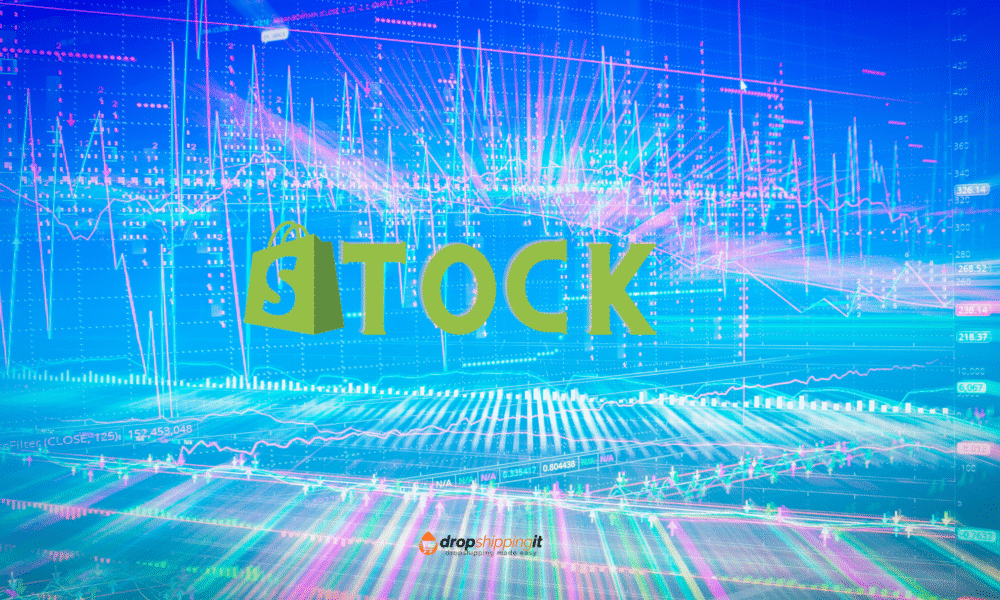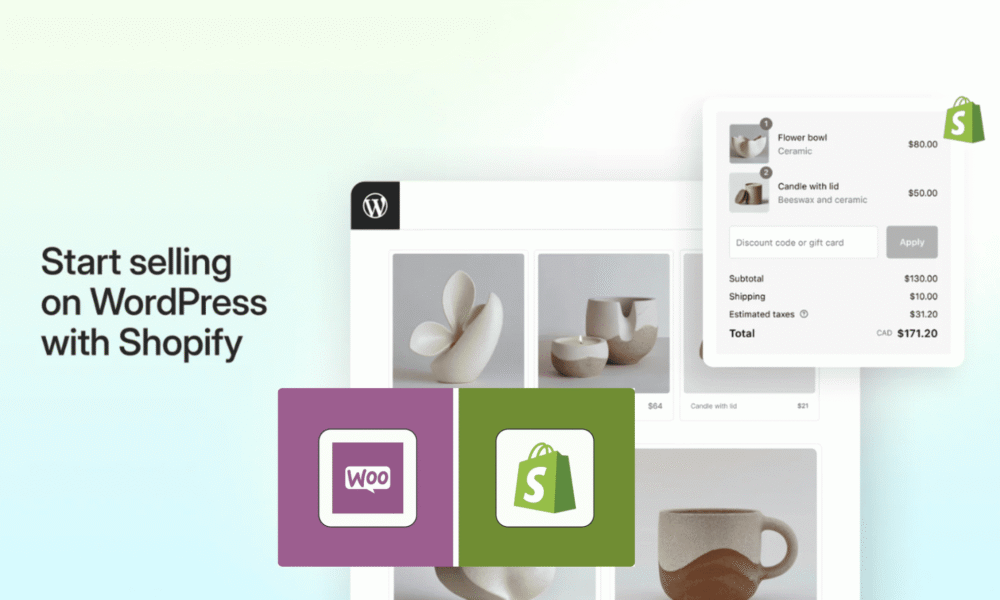If you love WordPress CMS but you want the power of Shopify's…
Is Shopify Stock Worth Buying Or Undervalued

If you’re watching online shopping or just keeping up with the Shopify stock market, you’ve heard much about Shopify (NYSE: SHOP) lately.
The e-commerce service provider is one of the best-performing large-cap stocks this year and has recently reached a fresh all-time high since posting another impressive earnings update.
Shopify stock (SHOP), the daunting upstart eBay (EBAY), and Amazon.com (AMZN) all benefited from the coronavirus pandemic fuel and online buying boom. But is Shopify stock purchase right now?

Oh, as well. What are the stocks that were very high in the week?
Shopify was started ten years ago by snowboarding enthusiasts. In reality, it began as an online snowboard store, expanding into e-commerce tech when the founders couldn’t find what they were searching for—a forum for selling products and growing the company.

Shopify stock(NYSE: SHOP) makes e-commerce easier. The company’s software allows traders to create digital storefronts and handle everything from payment processing and inventory tracking to delivery and shipping solutions.
Its range of tech solutions is an invaluable opportunity for big and small companies, allowing them to participate in the modern economy.
Not unexpectedly, the rapid growth in e-commerce over the last few years has resulted in impressive profits for Shopify stock shareholders.
Its share price has practically risen by more than 950 percent in just three years. But if you haven’t added that to your portfolio yet, it’s not too late to make a return.
What Is the Shopify Platform, And How Does It Work?
The e-commerce website operator encourages small companies to set up an online store and create their own brands.
Start a free 3 Day trial and enjoy 3 months of Shopify for $1/month Instead of $39/month on selected plans. Sign up now
BigCommerce (BIGC), a recent IPO, is a close rival. However, tech stalwarts Microsoft (MSFT), Adobe (ADBE), Amazon (AMZN), and Facebook (F.B.) have all pushed for the inclusion of business e-commerce solutions.

The Canadian tech corporation helps more than 1 million retailers in 175 countries distribute and advertise their brands. In return, they receive subscription fees.
Monthly Shopify subscriptions cost $29 for startups and $2,000 for major businesses.
It also provides shipping, digital payments, and performance under the umbrella of merchant solutions.
In 2020, revenues from commercial solutions increased by 116 percent, while revenues from subscriptions increased by 41 percent.
Gross product volume, or all products sold on the Shopify Website, increased by 96 percent to $119.6 billion.
Shopify reports that it currently has a 9 percent share of the U.S. e-commerce shopping market—more than eBay (EBAY), Apple (AAPL), and Walmart (WMT), but less than 39% for Amazon.
Shopify Stock Technical Analysis
According to MarketSmith chart review, Shopify’s stock portfolio cleared a 1,285.28 purchase point off a base-on-base trend on February 5. Volume, however, was very light.
Shares managed to march higher and climbed above the chase zone at 1,349.55.
On February 17, SHOP dipped 7 percent in quarterly profits, followed by sharp declines.
It remains stretched from its most recent breakout, meaning the shares are not in the purchase zone. Shares are well over the above 50-day line after seeking help at the main stage at the end of January.
For much of the years 2019 and 2020, the relative strength line joined. It’s only below the mid-February 2021 highs. The rising R.S. line means the SHOP stock outperforms the S&P 500 index.
It is the blue line displayed in the table. Shopify stock has the best-possible Composite Rating of 99.
The score incorporates critical fundamental and technical metrics in a single ranking.
The e-commerce tech firm has a rating of 87 R.S. This suggests that it has outperformed 87 percent of all stocks in the last year.
Accumulation/Distribution Rating A reflects institutions’ substantial purchase of SHOP shares over the previous 13 weeks. The applications stock has good institutional support. Nearly half (44 percent) of the shares are held by funds.
Shopify owned 1,687 funds in December, up 5 percent from September. According to the IBD Stock Check method, SHOP shows eight quarters of increasing ownership of the fund.
SHOP Earnings And Fundamentals
On primary earnings and sales metrics, Shopify stock wins an EPS rating of 98 out of 99 and an SMR rating of B on the A-E scale with the highest A.
The EPS ranking contrasts the company’s revenue growth with that of other firms, and the SMR rating tests revenue growth, profit margins, and return on equity.
On February 17, the e-commerce tech pioneer exceeded the fourth-quarter earnings expectations.
Shopify’s earnings rose 257 percent to $1.58 per share, as sales surged 94 percent to $977.7 million.
The revenue boom further cemented the perception that brick-and-mortar companies are pivoting online.
Despite good performance, SHOP sold off as the management postponed revenue guidance for 2021 and warned of slower growth in the coming year.
Though predicting sales would rise “rapidly” in 2021, SHOP retained detailed guidance.
Instead, it said, “Our outlook for 2021 assumes that when vaccines are rolled out in 2021 and populations can move around more freely, the overall economic environment is likely to improve.
Some consumer spending is expected to shift back to offline retail and services, and the ongoing shift to e-commerce that accelerated in 2020 is expected to resume a more normalized pace of growth.
According to Zacks Investment Research, Wall Street expects Shopify stock EPS to dip 2% in 2021 as sales increase by 32%. Starting with the current quarter of March, analysts note that year-over-year comparisons for Shopify would be more difficult.
Over three years, Shopify increased its profits by 101 percent on average and its sales by 57 percent.
In all of 2020, Shopify’s yields rose by 1,226 percent per share, as sales increased by 86 percent.
Investors should generally search for stocks with sustainable earnings and revenue growth of at least 25%.
So, the Shopify stock of SHOP is well ahead on all counts.
The IBD Stock Check tool reveals that the hot tech portfolio lags behind other peers with an inadequate pre-tax profit margin of 5.8 percent. Its 1.3 percent equity return is just below the 17 percent minimum investors would like to see.
Four reasons why Shopify is still an outstanding growth stock
1. E-commerce is a massive opportunity
Digital revolution is happening all over the globe, and e-commerce is a significant part of this transition.
Indeed, according to eMarketer, global e-commerce revenues soared by more than 27 percent in 2020, and while growth may slow down a little in the near term, the trend is far from over.
Shopify continues to develop and deliver new offerings to help its customers build on this opportunity.
For example, over the past year, it has extended its retail platforms to include integrations with Pinterest, Walmart, and Facebook Shops, enabling traders to list inventory conveniently on these pages.
Investors should remember that Walmart, the world’s biggest retailer, has chosen to partner with Shopify rather than oppose it.
Overall, management expects Shopify’s stock revenue opportunity to hit $78 billion by 2023, more than 30 times the company’s trailing 12-month revenues. In other words, the business has a lot of space to expand.
2. Shopify’s growth is accelerating
Tens of millions of people have attempted to keep their distance from everyone else during the COVID-19 pandemic, which also means stopping in-person shopping.
As a result, they have been turning more frequently to e-commerce options to purchase what they need, and the Shopify platform has been there to help. Its already substantial growth accelerated in the first nine months of 2020 and achieved profitability for the first time in 12 months.
3. It supports its merchants
Shopify is technically built from the ground up to serve the traders. However, competitors like Amazon put both vendors on one website, making it impossible for any company to stand out.
And, of course, Amazon competes directly with third-party vendors selling their offerings on their website. Moreover, it only enables anonymous contact between buyers and sellers, forbidding traders from forming relationships with their clients.
On the other hand, Shopify lets entrepreneurs create customized retail shops, establish their products, and grow deep customer relationships.
Both of these elements can be important drivers of a company’s prosperity. Not to say that Amazon is a low business—nothing may be farther from the facts. Yet Shopify’s platform is more matched with its customers’ needs.
4. It has a robust partner ecosystem
Shopify’s flourishing partner community encourages web designers and software developers to create apps that align with their platform, increase their usefulness, and add value to retailers.
As of the last year, 5,300 applications have been launched from the Shopify App Store, offering solutions for anything from store architecture and security to finance and analytics. Also, 37,400 partners have referred at least one customer to Shopify in the last year.
Likewise, the Shopify API’s most recent update (application programming interface) enables developers to add subscription transactions to Shopify’s checkout. Before this, retailers had to choose between using Shopify’s checkout or offering subscriptions, including juggling multiple checkout solutions.
This new feature significantly simplifies the operation, enabling traders to sell subscription deals to customers without any prior complication. Also, Shopify’s emphasis on continually evolving its platform reinforces its “first market” business model. This benefit should allow it to continue to capture market share in the years ahead.
Coronavirus Impact On Shopify Stock
Shopify debuted as a clear coronavirus stock winner in 2020. Since then, more buyers and traders have switched to the Shopify App.
The pandemic has led to internet purchases and sales, boosting the e-commerce site operator.
“We conclude that the changed behavior of traders and customers in 2020 has greatly increased the opportunities for entrepreneurship and digital trading,” Shopify said on February 17, outlining its plans for success in e-commerce.
Shopify has been investing aggressively to expand its market. Critical “incremental” investment areas in 2021 include the Shopify Fulfillment Network, the Shopify stock App, and the brand’s international growth.
It will also further incorporate the purchase of 6 River Systems with its automated performance technologies into its delivery network. Analysts name SHOP the systemic survivor of the e-commerce boom after the coronavirus crisis.
According to Zacks, fifteen analysts have a purchase rating on SHOP stock, 11 have a hold, and one has a sale. Goldman Sachs predicts that global e-commerce will rise by 19 percent annually over the next three years, up 16 percent from a previous perspective.
Spending On Shopify Tops eBay — Amazon Next?
Shopify has also exceeded eBay in terms of the total production of goods. But it’s not a retailer in itself. Instead, it offers software tools and platforms for usually smaller traders to create websites, market merchandise, and receive fees, all under their domain and brand names.
On February 9, the company extended Shop Pay, its quicker checkout tool, to Shop merchants on Facebook and Instagram.
Shopify has some remarkable milestones in Q4 2020: Shopify stock merchants had $5.1 billion from Black Friday to Cyber Monday. That compares to $2.9 billion a year earlier during the same holiday season.
It also developed the Shopify Fulfillment Network, including implementing service tech to store and distribute goods to its customers. Experts claim Shopify could even make this $1 billion investment by 2023.
Programs have also grown to lend to companies (Shopify Capital) and help retailers send orders online with less friction (Shopify Shipping).
In 2020, Shopify forged a marketing alliance with the viral video-sharing service TikTok. Earlier collaborations included Walmart, Facebook (F.B.), Pinterest (PINS), and the well-funded startup Stripe.
Also, last year, Shopify made major moves linked to digital payments. Shop Pay Installments get carried out, a “buy now, pay later” offering.
It introduced Alipay from Alibaba (BABA) as a payment system, enabling U.S. traders to pay more than one billion users in China.
Analysts at KeyBanc Capital Markets expect Shopify to collect e-commerce fees from retailers comparable to Amazon. They add that Shop Pay currently has 60 million customers.
With Amazon’s share price around $3,375 when writing, you may need to purchase convertible notes to get on some of them. But don’t let that scare you away from me.
It isn’t easy to believe, but Amazon’s stock has increased in size over the last three years. Their annual revenue will have more than doubled over the same period.
However, more businesses are looking to provide e-commerce tech services. Adobe purchased Magento’s e-commerce technology company in 2018, and Microsoft released Dynamics 365 in 2019.
Longtime affiliate Facebook launched Facebook Shops and Instagram Shops in 2020. After rumors that Shopify’s rise troubled Amazon CEO Jeff Bezos, Amazon acquired Selz on February 16. The Shopify competitor also lets small companies create online shops.
SHOP Stock Group
Shopify belongs to IBD’s Computer Software-Enterprise division, which ranks 92 out of 197 business sectors.
The business tech group has been a significant winner, but a recent market rotation has seen buyers move the capital to cyclical industries such as mining, commodities, and finance.

Business tech stocks have emerged as champions due to the trend of home-based jobs after the coronavirus pandemic. However, work-from-home cloud supplies have recently suffered as the vaccination roll-out has slowed.
Salesforce (CRM), Twilio (TWLO), and Paycom Software (PAYC) are among the stocks to be monitored in this community.

Other participants include ServiceNow (NOW), DocuSign (DOCU), Workday (WDAY), and Zoom Video (Z.M.). IBD 50 inventories Digital Turbine (APPS) and Dynatrace (D.T.) are among the top stocks in this category, with SHOP stock.
ServiceNow stock is on IBD Leaderboard, a selected list of stocks with the most scope for significant returns.
Is Shopify Stock A Buy Right Now?
Shopify is ticking off all the boxes customers may be waiting for. It was a big winner in 2019 and 2020, solidifying its challenge to eBay and Amazon.
Essential purchases and improvements promise more growth. The software company boasts colossal profit and revenue growth, which the pandemic has boosted.
However, in 2021, after a blockbuster year, Wall Street expects the torrid speed of change to slow down.
Shopify is ticking off all the boxes customers may be waiting for. It was a big winner in 2019 and 2020, solidifying its challenge to eBay and Amazon.
Essential purchases and improvements promise more growth. The technology company boasts enormous profit and revenue growth, which the pandemic has boosted.
However, in 2021, after a blockbuster year, Wall Street expects the torrid speed of change to slow down.
Why Shopify Stock Practically Increased to a New All-Time High Today
What happened?
Shares of Shopify (NYSE: SHOP) climbed 6.5 percent to a new closing high of $1,432.99 on Tuesday after the online shopping platform announced it would add its quick checkout system to Facebook (NASDAQ: F.B.) and Instagram.
So what
Shopify will implement the Shop Pay program for all of its vendors selling their goods on Instagram and Facebook in the coming weeks. Consumers will use Shop Pay as a payment tool, similar to PayPal while viewing popular social media pages.
Shopify claims the checkout mechanism can be as much as 70% smoother than rival systems by pre-populating customers’ billing and delivery details. These pace and safety advantages, in essence, help to raise revenue transaction rates for their merchants.
INVESTORS BID UP SHOPIFY’S SHARES TO NEW TUESDAY HIGHS.
“People are accepting social media not only for connection but also for trade,” said Shop General Manager Carl Rivera in a press release. “Making Shop Pay accessible outside of Shopify for the first time means that many more shoppers can use the easiest and best online transaction.”
Now what
More than 1.8 billion users use Facebook every day. Social media giants’ customers are increasingly purchasing merchandise while scanning Facebook and Instagram’s mobile pages. Shopify’s quicker and more reliable checkout service could intensify this trend.
The more products users buy on Facebook through Shopify’s payment app, the more money all businesses will create. This article is the author’s opinion, who may disagree with the “official” recommendation stance of the Motley Fool Premium Advisory Service.
We’re stupid! Questioning an investment thesis—even one of our own—helps us all think objectively about investments and make choices that allow us to be better, smarter, happier, and more prosperous.
Are you looking for more publicity in the e-commerce market and stock on sale? Let’s talk about Shopify (NYSE: SHOP). The firm has recently posted large profits, but the stock price is down about 6 percent from its all-time peak.
Shopify provides its customers with the complete solution for converting their enterprise into a fully functioning e-commerce machine, including app creation, logistics, payments, and more.
In their most recent earnings call, Shopify showed that they are the number two leader in U.S. e-commerce retail revenue for 2020. Shopify’s Q4 sales are up 94 percent year-on-year, and its 2020 revenues are up 86 percent year-on-year!
Not only does Shopify see substantial sales growth, but its average product valuation is over 96 percent. The final icing on the cake is a very balanced balance sheet with over $6 billion in capital and short-term investments and less than $1.5 billion in net liabilities.
Why Is Shopify Stock So High?
Why is Shopify’s stock so high? The Canadian company Shopify unveiled improvements to the platform earlier this year – advances that have changed the game. After the company’s release, the share price rose almost 8 percent – SHOP’s share price hit the company’s record peak.
Any of the leading new additions included upgrading Shopify Plus and redesigning their online store experience. These announcements and others have placed investors in a genuinely upbeat mood.
Is Shopify a Good Stock?
Shopify [SHOP] helps small business owners market their goods online on a user-friendly website and circumvent middlemen like Amazon and Etsy. Shopify’s success experience—and growth observers expect it to continue—could warrant a recent leap in valuation.
Indeed, analysts predict earnings growth of more than 65 percent for 2020 and sustained growth of about 75 percent for the next five years. These forecasts may have been prophetic in a corporation that did not see the benefit until 2019.
Looking back at Shopify’s price-to-sales ratio over the last five years, the average has been around 19.1. These recent technologies also brought the company’s P/S to almost 49.2.
Shopify outperforms the benchmark compared to the S&P 500 – the S&P average price-to-sales ratio is significantly more than 2.3.
The company’s sales increased by 47% compared to the same time last year. This is also higher than the average growth rate in e-commerce, which is expected to be only below 15%. Shopify recovered from the irrational pandemic sell-off; it hit a peak price-per-share of $844 in May.
Why Is Shopify So Expensive?
The e-commerce site giant currently has an enterprise value/sales ratio of almost 70. When Shopify reached a 52-week low earlier this year, critics never expected a surge in the census—the stock at the time of the press was more than 260 percent higher than the low. Like the 2008 and 2009 housing bubbles, Shopify continues to be an e-commerce bubble poster boy.
Of course, Shopify’s idea is sound, particularly in a time of rising home shopping. In reality, many traditional firms have selected e-commerce as their only means of survival.
The dilemma is that most of Shopify’s companies are precisely those that usually collapse horribly during economic slowdowns.
But this may also be why Shopify looks so enticing at the moment. Companies like Shopify would benefit from the protocols and initiatives designed to help slow the coronavirus.

For example, Work-at-home physical shopping changed to e-commerce and exercise at home rather than at a spa.
So, on the other hand, it makes sense that employees who usually work in an office are shopping for home office supplies, and businesses are searching for ways to satisfy home-based workers with things such as video software or other channels.
Online orders are rising for items for which people usually only go to the grocery store. This suggests that sales of home-based fitness devices will be on the rise when gyms close.
See, the thing with bubbles is that they may appear like a bubble and behave like a bubble – so to know for sure, it’s got to burst. Company valuations that sound irrational will be justifiably nuts – as will their subsequent valuations.
What Was Shopify’s IPO Price?
When Shopify went public in 2015, the initial shares were valued at $17. As of July 10, 2020, Shopify’s shares are selling at $1032—nearly a 5,000 percent leap from their IPO.
This rise in value had much to do with their phenomenal growth—sales increased 22 times from $67 million in 2014 to $1.6 billion in 2019, generating market capitalization that started at $1.3 billion and rose to $86 billion. This is a tribute to its impressive success, but it doesn’t reflect the full story.
Shopify’s net loss has increased over the same four-year period—from $22 million in 2014 to $125 million in 2019.
This is another indication that Shopify’s stock may become overvalued. But if you were to repurchase shares in 2015, you would already have made more than 2,700 percent return on your initial investment.
Is Shopify Stock Overvalued?
Shopify’s stock forecast may be deemed overvalued. Although the coronavirus epidemic left several brick-and-mortar stores facing bankruptcy lawsuits, internet retailers saw a surge in sales when shoppers—many of whom shopped online but bought in-store—had little alternative.
And if the latest recession wage war has been going on for many more months, some experts also believe that Shopify’s share prices are unsustainable.
They believe the virus is linked to the current market for companies such as Shopify and the Zoom video conferencing platform.
Once it disappears and the world returns to some semblance of normality, the current market for these programs will plummet. But that’s yet to be seen.
If all of these programs’ current needs were incorporated into the “modern standard,” share prices would be considered right where they should be.
Why Is Shopify Stock So High: The Bottom Line
Collecting the right Shopify stock forecast for your investment objectives and budget is an essential first step toward building wealth on the stock market.
But with hundreds of stores to choose from, it may be overwhelming for new investors to decide which stocks to buy in their brokerage accounts. Today’s market uncertainty doesn’t help, either.
Analysts may talk about what they want about historical success and so on. Still, investors genuinely care about the outlook for the future—what’s going to happen or expected to happen?
Shopify stock now trades at nearly $1,035 per share at press time. That may be $1,060 – look at the 261.8 percent expansion. If you think of a three-time investment range, share prices may be as high as $1,171.
The stock isn’t cheap—about its highest price ever. However, the company has made significant right decisions. Its exclusive Michelle Obama podcast was one of the most popular podcasts in the global economy last year.
Spotify continues finding new audiences and ways to make money from its services. It’s a bit riskier than some other suggestions here, but it might be worth investing if you believe in the long-term of podcasts. Just my two cents, man!
Although the extension projection serves as a capacitor, you’ll have to consider the probability of reversal, whether caused by time-consuming trends or even a dip in market values.
Start Shopify For Only

Try Shopify free for 3 days, no credit card is required. By entering your email, you agree to receive marketing emails from Shopify.




Comments (0)